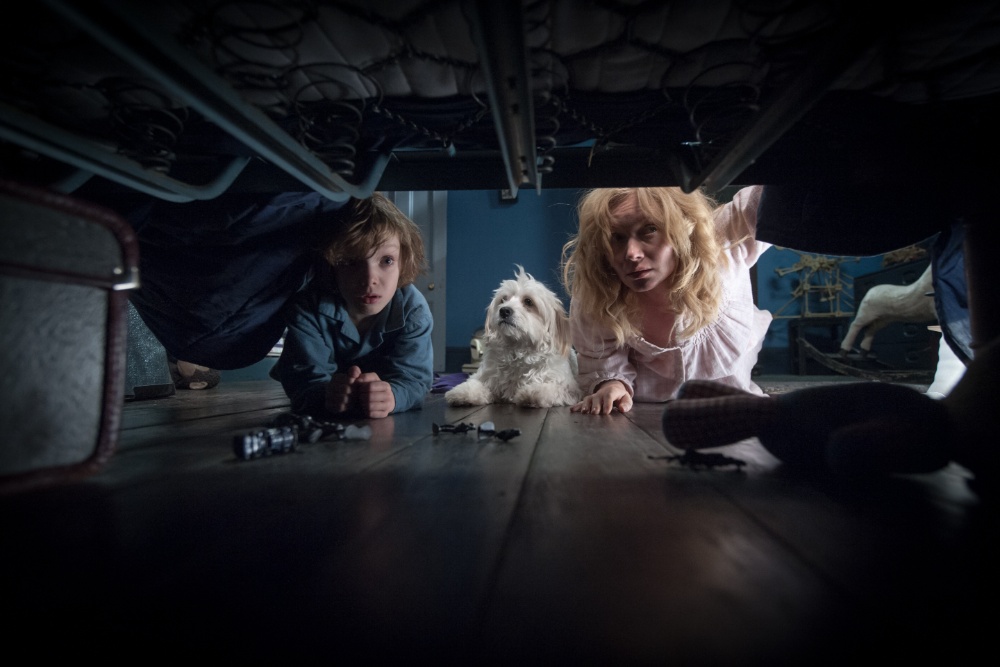Celebrating a decade of ‘The Babadook’: A look back at Jennifer Kent’s horror masterpiece
A return to the big screen
In celebration of the 10th anniversary of Jennifer Kent’s directorial debut, The Babadook, IFC and Iconic Events Releasing are bringing this indie horror classic back to theaters on September 19 and 22. This re-release offers fans and newcomers alike a chance to experience the chilling tale on the big screen once more.
The Sundance debut
Premiering at the Sundance Film Festival in January 2014, The Babadook tells the story of Amelia, a struggling single mother played by Essie Davis, who is increasingly tormented by her six-year-old son Sam’s incessant outbursts. After reading a mysterious bedtime story to Sam, a nightmarish demon is unleashed upon their household, deepening the rift between mother and son.
Reflecting on the journey
Revisiting the film
When asked about the last time she watched The Babadook, Kent admitted, ”Oh my God, maybe since it came out. You watch a film so many times making it, and then it’s jettisoned out into the world. The only time I’ve ever seen it in full is that midnight screening at Sundance and then I’ve never seen it again. And I never want to.” This sentiment is common among filmmakers, who often find it difficult to watch their work without picking apart every detail.
The Sundance experience
Kent vividly remembers the premiere at Sundance, describing it as a “hyper-aware moment.” She recalls the anxiety of the screening, noting, “Why is that woman coughing? Why is there so much silence?” Despite initial doubts, the film’s reception eventually turned positive, leading to a successful run and a lasting impact on the horror genre.
The making of ‘The Babadook’
Writing in Amsterdam
Kent began writing The Babadook in Australia before taking it to the Binger Filmlab in Amsterdam for development. This experience was transformative, providing her with valuable feedback and the freedom to create the film she envisioned. “That six months in Amsterdam was incredible. That’s where The Babadook was born, in the sort of wintry streets of Amsterdam,” she reflects.
Personal influences
The film’s treatment was deeply personal for Kent, inspired by the death of her father. She explains, “I was fascinated with this idea of someone pushing down so much and the pain having such energy that it had to go somewhere.” This concept of repressed grief and its manifestation as a separate entity became the core of the film’s terror.
The storybook element
The decision to use a storybook as the vessel for The Babadook was a deliberate choice. Kent wanted a mysterious and versatile object that could drive the narrative. “The book seemed a no-brainer. You could write things in the book. You could rip the book up. You could burn it,” she explains.
Character development
Sam’s contraptions
Sam’s character, particularly his obsession with weapons and machinery, was inspired by Kent’s own childhood. “I used to go to the hardware store and get bucket seats and lawnmower wheels and make go-karts with brakes and steering,” she recalls. This industrious approach to play was essential to making Sam the feisty hero of the film.
The emotional depth
One of the most heartbreaking lines in the film is when Sam says, “I know you don’t love me. The Babadook won’t let you.” Kent praises Noah Wiseman’s performance, noting his ability to convey such deep emotion at a young age.
Crafting the ending
A journey through hell
Kent always intended for Amelia and Sam to survive their ordeal. “The whole film is traveling to the center of hell, but you know, via hell towards the light,” she explains. The ending, shot in a haunted basement, underscores the film’s themes of enduring pain and finding empathy.
A haunted set
The basement where the ending was filmed was reportedly haunted. Kent shares a chilling experience: “We felt this bit of light go by, and we both said, ‘Whoa,’ at the same time. Then we looked at the photo, and there was a photo of me bending backward with this big wave of light flying past.”
The filmmaking process
A looser set
Kent prefers a looser set with running takes to allow for experimentation and improvisation. This approach was particularly important when working with a young child in the lead role. “Performances are obviously key to cinema. You need to get the right performance and it needs to feel real,” she emphasizes.
Online interpretations
While Kent hasn’t watched the numerous YouTube videos explaining The Babadook, she appreciates that they exist. “It’s wonderful that they’re being made because someone cares enough to think that someone else will care enough to go and watch that,” she says.
Looking ahead
New projects
Kent is currently developing a new supernatural horror series set in 1700s Ireland, exploring Irish folklore. “It’s a six-part one-off series. Irish myth and folklore. You think it’s these dancing leprechauns, but in actuality, a lot of the mythology is very frightening,” she reveals.
As The Babadook returns to theaters, it serves as a reminder of Jennifer Kent’s unique voice in the horror genre and her ability to blend personal experiences with universal fears. For fans of cinema, this re-release is an opportunity to revisit a modern classic and appreciate the artistry behind it.

 Italian
Italian






